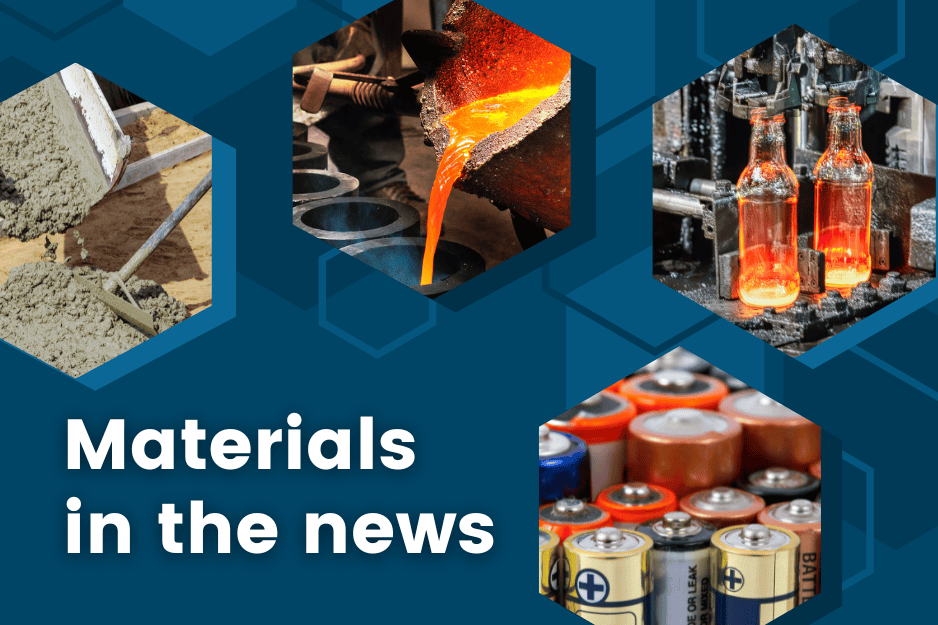
[Image above] Credit: ACerS
NANOMATERIALS
Shut the nano gate! Electrical control of nanopore diameter
A collaboration headed by researchers at Osaka University developed a nanogate that can be open or shut by applying electricity. The nanogate, which consists of a single pore formed in a silicon nitride membrane, shows various behaviors depending on the materials in the solutions on both sides of the gate and the applied voltage.
Pushing the boundaries of flat optics
Researchers at Pohang University of Science and Technology developed a novel multidimensional sampling theory to overcome the limitations of flat optics. Their study not only identifies the constraints of conventional sampling theories in metasurface design but also presents an innovative anti-aliasing strategy that significantly enhances optical performance.
ENERGY
Tiny copper ‘flowers’ bloom on artificial leaves for clean fuel production
Researchers from the University of Cambridge and the University of California, Berkeley, combined a light-absorbing perovskite “leaf” with a copper nanoflower catalyst to convert carbon dioxide into useful molecules.
New study uncovers key insights into electrolyte materials for all-solid-state batteries
Researchers led by Argonne National Laboratory revealed key insights into solid electrolytes for use in all-solid-state batteries. Specifically, they examined what happens when lithium lanthanum zirconium garnet containing aluminum or gallium dopants contacts metallic lithium.
ENVIRONMENT
Granular activated carbon breaks down forever chemicals
University of Missouri researchers found they can break PFAS down into harmless, inorganic fluorine by heating it with common granular activated carbon. They achieved 90% mineralization of the PFAS at 572°F. Previously, reaching this level of mineralization required temperatures in excess of 1,292°F.
Nanoscale tin catalyst discovery paves the way for sustainable CO2 conversion
Researchers from the University of Nottingham and the University of Birmingham developed a catalyst made of tin microparticles supported by a nanotextured carbon structure. The catalyst increases its activity during use, which the researchers attribute to the tin microparticles breaking down into nanoparticles.
Examining the potential environmental effects of mining the world’s largest lithium deposit
The world’s largest known lithium deposit exists within a vast salt pan called the Salar de Uyuni, which stretches for thousands of square miles atop a high, dry Andean plateau in Bolivia. Duke University researchers conducted the first thorough chemical analysis of wastewater associated with mining the lithium brine at the Salar de Uyuni.
MANUFACTURING
Low-cost synthesis of pearlescent pigments achieved using vanadium phosphates
Tohoku University researchers found that the layered crystal structure of vanadium phosphates has major success in producing rich pigments that are stable in organic solvents, making them excellent candidates for products such as paint, cosmetics, or even glass-alternative plastics.
Researchers advance hypersonics manufacturing with novel 3D-printed ceramic materials
Researchers at the Purdue Applied Research Institute are developing additive manufacturing processing methods to 3D print “dark ceramics”—materials that can withstand the harsh conditions of hypersonic flight—into complex shapes for hypersonic vehicle components.
OTHER STORIES
‘Slidetronics’: New ways to shift layers of van der Waals materials
Tel Aviv University researchers published a perspective paper that summarizes ongoing studies and proposes new methods to refine the “slidetronics” switching mechanism, which uses electrical fields or mechanical pressure to shift the layers of van der Waals materials into various stable configurations.
Making an invisible electric wire: Guiding electricity with sound
University of Helsinki researchers uncovered a way of transporting electricity through air by ultrasonic waves. Previously, sparks could only be guided with laser-induced discharges, which required the use of dangerous lasers and precise timing.
Innovative smart window technology balances heat and visibility control
Researchers combined liquid crystals and nanoporous microparticles to create a smart window technology capable of controlling both visible light and infrared radiation. To further enhance performance, they integrated a vanadium dioxide metamaterial surface into the system.
Human genome stored on ‘everlasting’ memory crystal
University of Southampton researchers stored the full human genome on a 5D memory crystal, which holds the Guinness World Record for most durable data storage material. They used ultrafast lasers to precisely inscribe data into nanostructured voids orientated within the silica crystal, with feature sizes as small as 20 nanometers.
Author
Lisa McDonald
CTT Categories
- Weekly Column: “Other materials”